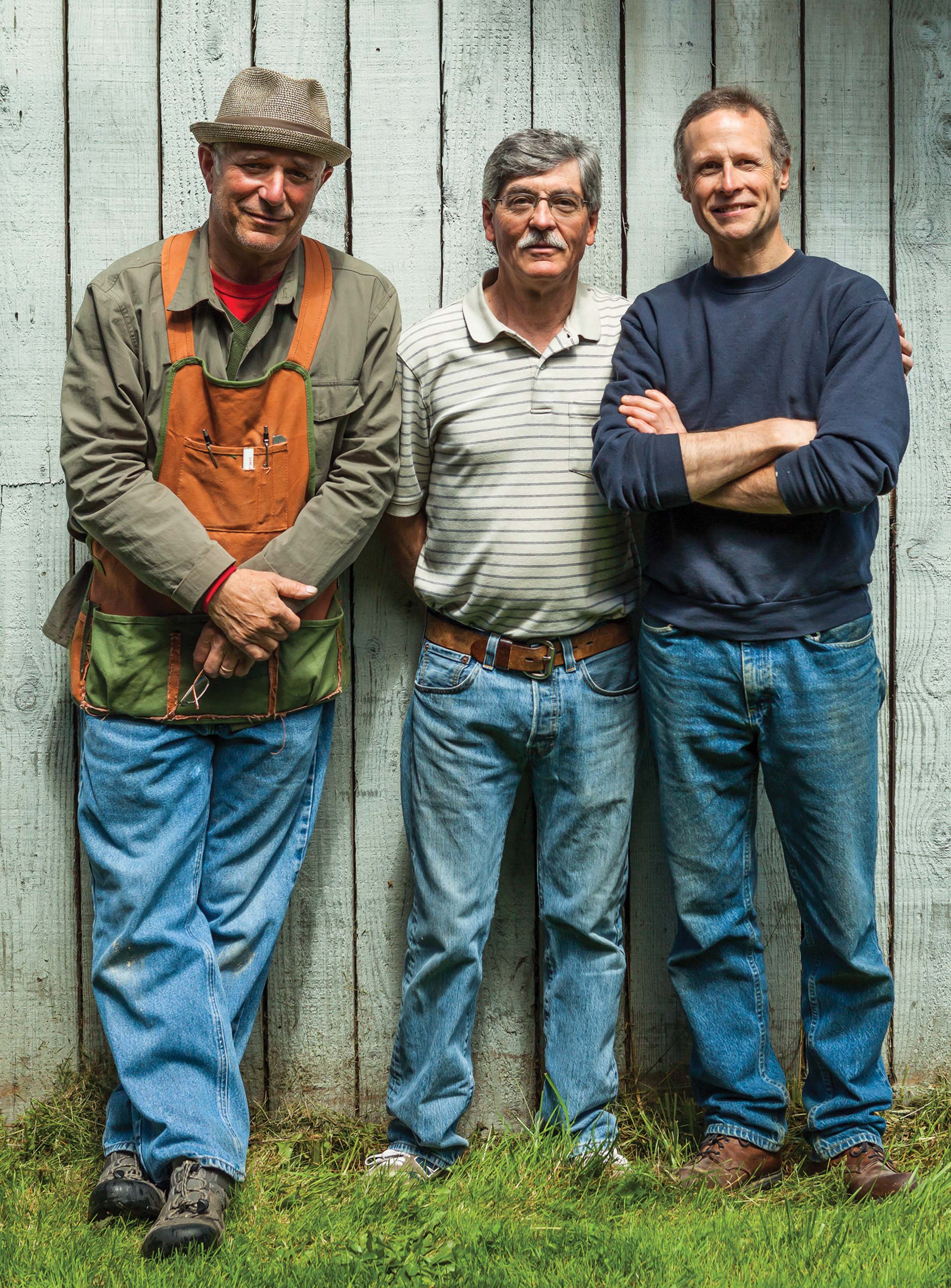
04 Aug Something of Value
You’ve never seen anything on a piece of furniture like the lone black leg that slashes through the slablike surface of John Shinneman’s wall desk and arcs to the floor — no, wait, you have seen it, just not as furniture. Shinneman went to a ton of trouble on the chance that it could trigger an innate memory, something that looks like physics itself, in the mind of anyone who sees it. Instead of drawing the leg — and he was trained as an architect, so he could have made a graceful curve by eye — he ripped the wood into thin strips, temporarily clamped them together at one end, tied a rope to the other, then pulled it back as if it were a sapling, bending to gravity. Then he recorded the curve and glued the laminations into precisely that form. He explains, “I wanted it to look as though the desk was placing its weight on the leg, and that’s how it grew to be standing there.”
So much effort, such a minuscule detail. Maybe the hand-drawn curve would have deviated from the universe’s ordinance by an inch or two. To Shinneman, it mattered.
Such things regularly concern the remarkable nucleus of furniture builders clustered on Whidbey Island, a 15-minute ferry ride from the Puget Sound mainland departing some 30 miles north of downtown Seattle. Although the recession battered and gnawed at the group, there are still 15 to 20 professional craftspeople on the island working in one or two-person shops, designing and building meticulously crafted desks, tables, chairs, beds, cabinets, doors, bowls and even musical instruments. (Woodpalooza, the Whidbey Island Woodworkers Guild’s annual show, is scheduled August 31 to September 2 at the Whidbey Island Center for the Arts in Langley.)
Each of the woodworkers has a unique story; the common thread is that the medium of wood, and the creation of useful and beautiful objects from it, spoke to them. For Shinneman, it was the realization after architecture school that he didn’t only want to design things; he wanted to build them by himself. Furniture’s further attraction was that wild ideas are more feasible to execute. He points to a scroll-like curved arm taking shape as part of a dressing table. “A dresser is like a personal altar, a celebration of your being. This client is a poet, and she wanted something ‘fun.’ If I try to do something like that in architecture, it’s an extra $100,000 and several months. In a dresser, it’s a couple of days’ work.” Shinneman is 55, pencil-thin, talks with a quicksilver intensity that also seems to find expression in his edgiest designs. Yet, he loves the serenity that Whidbey provides. He was raised in the Seattle suburbs but never felt like he belonged there. After learning the woodworking trade at a Seattle cabinet shop, he moved to the island in 1986 and developed enough of a client base right here that since 1990, “I haven’t had to leave the island for work.” Some other Whidbey woodworkers say likewise. The island’s population is about 60,000, but a lot of people have moved here to buy their final homes, and some, if they can afford it, want cabinetry and furniture that is distinctive and enduring.
Shinneman’s catalog comprises a wide variety. A number of pieces celebrate geometry as art, with swoops and fandangos and pyramidal forms; they’re more sculpture than furniture. Other pieces, built on commission, are fairly traditional in form or style; you might expect something not too different in a factory furniture store — until you look very closely at a Shinneman dresser, and you see that the wood grain flows uninterrupted from one drawer to the next, as if the whole thing had been given birth from a single tree. Study the subtle curves in it, and you sense a force of personality behind them, not a marketing department’s directive. Inspect the joints, and to the amateur eye they look like perfection.
“These pieces are my legacy, and if someone pulls a drawer and it falls on their feet, they’re going to think of me as a bum,” he says. “I want a legacy of friends.”
Yet, perfection is elusive. All the Whidbey woodworkers seem to struggle with it in one way or another, and they all know they don’t achieve it. For one thing, wood is an organic medium, which means that it’s not finished breathing just because the tree has been cut and milled. Wood will bloat and shrink and maybe warp with changes in humidity. A piece of furniture near a window or skylight will change color over the years because of ultraviolet solar radiation. For another, they have to make a living, and working on something forever means never getting paid for it.
“I consider myself a practical perfectionist,” Shinneman explains. “By that I mean I have a perfectionist’s eye and attitude tempered with the knowledge that no matter how much effort I put into it, there is no such thing as perfection. So I cut myself a little leeway. I am in business, and I have to say, enough is enough. But I liken it back to when I was in high school band. We had a band teacher who was a hard-nosed, wonderful man who expected the world of us. He’d say, ‘I’d want it so that on your worst day you’re miles ahead of everyone else.’ Starting with that at the beginning of a job means if I slip a little bit, I’m still ahead of everyone’s expectations. If I start only with ‘good enough,’ and I slip, then it really isn’t good enough.”
Gary Leake, another of the Whidbey woodworkers, has an equally complex, though different, take on perfection and its counterpoint. “I must be a perfectionist,” he admits, “because I’ve never completed a piece where I didn’t find a flaw or mistake in it somewhere. But maybe I’m not too sick, because I don’t keep a record of the mistakes in my registry.”
Leake is 59, talkative and affable, gently pokes fun at himself by wearing an “Island Time” sweatshirt around his shop. “Island Time” is a long-running Whidbey joke about the supposedly leisurely pace of work and life on the island.
And in a way it applies to Leake. Not that he’s a slacker, but he has slabs of assorted hardwoods — lovely, expensive pieces — that have been lounging around his shop for a decade because they haven’t “spoken” to him yet. That’s the word he uses, repeatedly, and it encapsulates his whole philosophy of woodworking and furniture design. He doesn’t like to impose his ideas on a piece of wood. He wants the piece’s grain pattern, color and form to suggest to him what it wants to become.
“Mostly, I’m of the Shaker philosophy: If you’ve got a really pretty piece of wood, just let it be instead of doodadding it up.”
Leake’s furniture may come from the same philosophical core as the Shaker style, but most of it looks very different. He’s an enthusiast of the “live edge” for tables, in which one or more of the edges are not milled flat and straight, but rather echo the natural geography of the tree’s form. He will slice off the bark and sand the live edge enough that it’s free of snags, but the form remains whatever nature dictated as the tree grew. It might be a flowing curve or it could evoke the craggy geography of a Utah river canyon. He gravitates toward Oregon walnut, Adirondack black cherry, bigleaf maple, African padauk and other spectacles.
As for the grain, the more flamboyant, the better. He looks for qualities such as the “flame crotch,” where two branches have grown together; or “spalting,” tracks left in the wood by decayed fungi. Mainstream furniture manufacturers shun such wood, and Leake has left word with numerous suppliers to let him know when these funky orphans appear. The suppliers are extremely happy to do so. “The word’s out that we’ll buy things when nobody else will,” Leake says. “They call me, the price goes up four, five, six-fold.”
Leake is as close to a lifelong wood craftsman as you can imagine, although he endured a long detour as an electrical engineer. He grew up working in his grandfather’s Oregon shop, and can remember turning things on the lathe as early as 5 years old — grandfather standing protectively beside him, of course. He uses that same lathe today. In 2000, he and his wife, Sandy, took a leap of faith — they then had two kids in college — and bought a little farmstead on Whidbey to establish the business. Just two specifications: They would work at home (Sandy does the finishing) and they would have no employees.
Whidbey Island, like his pieces of wood, just seems to have spoken to him. “The isolation is a treasure,” he says. “I’ll build a fire, sit in the chair, just look at the wood — and maybe an idea will come to me. The environment may not directly influence the work, but it certainly encourages the method.”
You get that feeling around Rob Hetler, too. If a human being could radiate tranquility, it would be Hetler. He believes that fine craftsmanship, an endangered quality in our contemporary world, itself promotes serenity. In a column he wrote as president of the Woodworkers Guild, he explained: “I love a well-fitted joint: mortise and tenon, dovetail, even a butt joint. All must be done correctly to fit … I have always believed that when everything in a project is in harmony, even if a viewer is unknowledgeable about woodworking, they will be calmed in the presence of such work. They instinctively know that this is something of value.”
Hetler studied ceramic art in college, but after he moved to Israel in the 1980s he had to do something practical to support himself and his family, so he began working as a contractor, building homes. At one project’s end there was a staircase and cabinets left to be built, and since he was the supervisor, he assigned himself. He didn’t actually know how, but he figured it out, and has never looked back. In the late 1980s he returned to the Seattle area, found a fixer cabin on Whidbey, and launched his business. Like the other woodworkers, he builds exquisite high-end furniture, but he has neither the luxury nor the temperament to be a snob about it.
He points out a “terrible chair” that someone just brought him. Her husband was sitting in it when he had a stroke, and the EMTs broke the chair while working on him.
She asked Hetler if he could repair it. “I said yes. I’m not averse to doing that to make someone happy. It’s about being a woodworker, not a high-end artist.”
Yet, it’s chairs like that — and prospective clients who come in with a sketch or picture of a desk, and flee when they learn the piece will cost $2,000 to $4,000, double or quadruple the price of a factory counterpart — that make Hetler sometimes feel less than optimistic about the role of craft today. “I think we’re sort of a culture of expedience,” he says. “Whatever works, whatever is easy — I don’t think there’s much value placed on things of beauty.”
But if there’s a glowing nucleus of optimism, it might be right here. Like Leake’s and Shinneman’s, nearly all Hetler’s creations stay on Whidbey Island. “I think people come here,” he says, “and all of a sudden there’s some sense that they have time to think more deeply about their surroundings.”
- John Shinneman’s workshop includes tools that are themselves works of art, such as his 1898 bandsaw.
- Shinneman’s lemon yellow workshop walls are encrusted with hand tools, some antique, all in everyday use.
- His small hall tables take their forms from the size and shape of the wood at hand.
- Hetler is meticulous about his tools; here he sharpens a chisel.
- His small decorative boxes are simply ornamented by the natural forms of the wood.
- Hetler’s dog and shop assistant is named Lele.
- A dressing table commissioned by a poet includes a form resembling a cello’s neck.
- Most of Shinneman’s creations include curvilinear forms, such as this coat rack.
- Gary Leake holds a piece of hardwood with spalting — squiggly dark lines caused by fungal decay inside the tree.
- The clamped plank illustrates Leake’s fondness for the “live edge,” expressing the natural contours of the tree in the finished furniture.
- These round legs are from an antique dining table Leake is restoring.
- Rob Hetler is chairman of the Whidbey Island Woodworkers Guild, which currently has about 35 professional and amateur members.
- Rob Hetler’s prized collection of chisels are always at the ready.





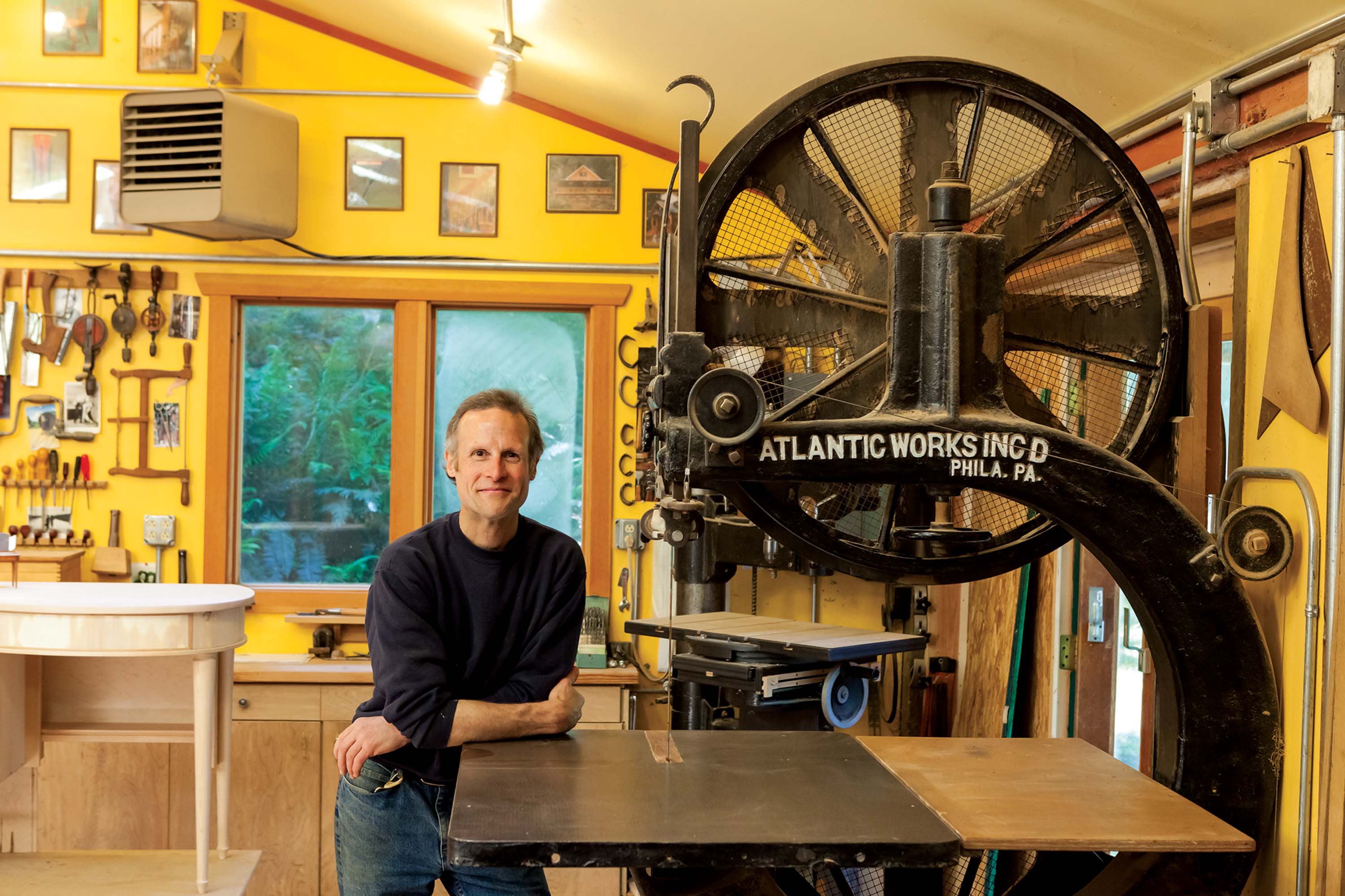
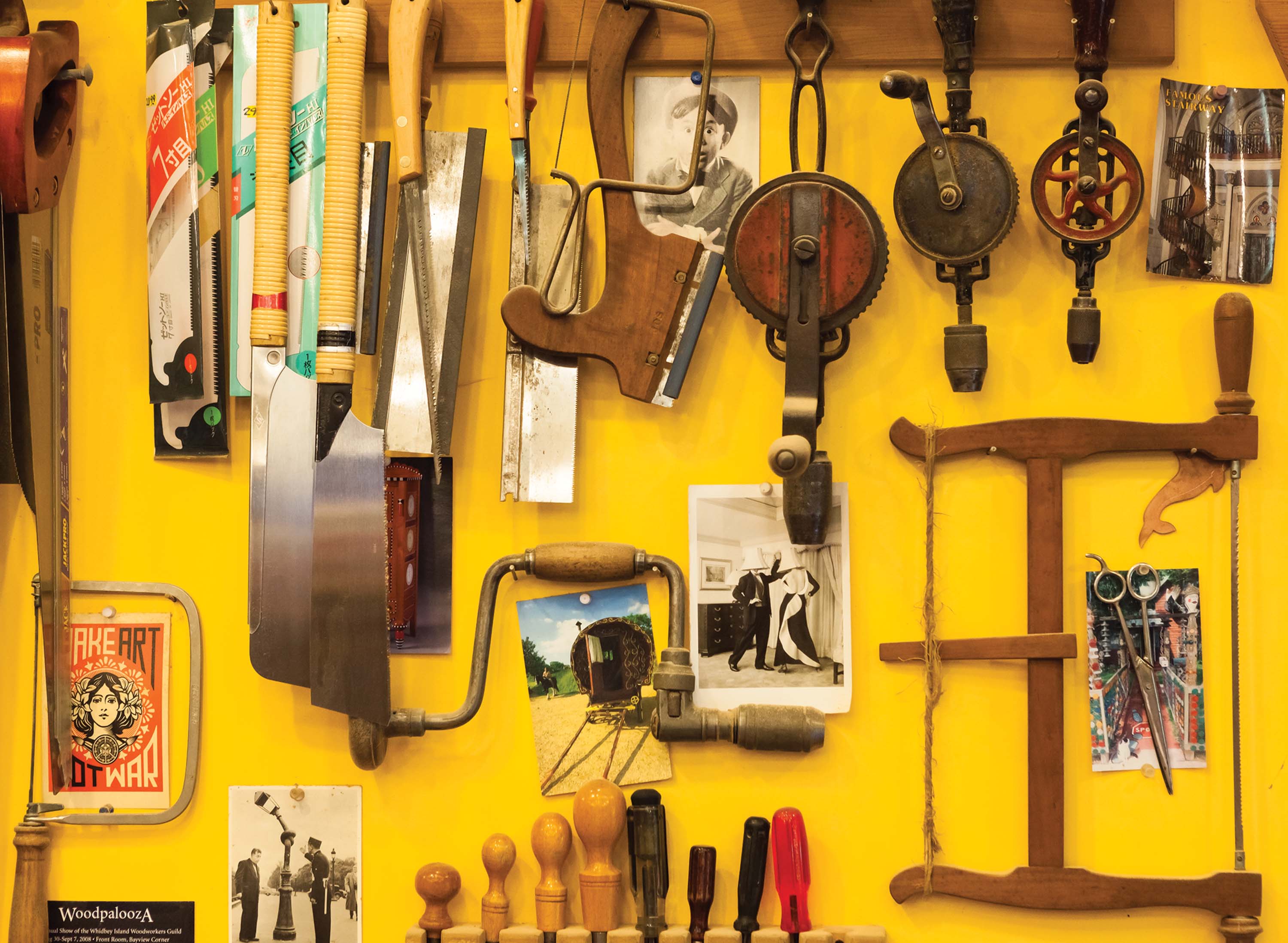
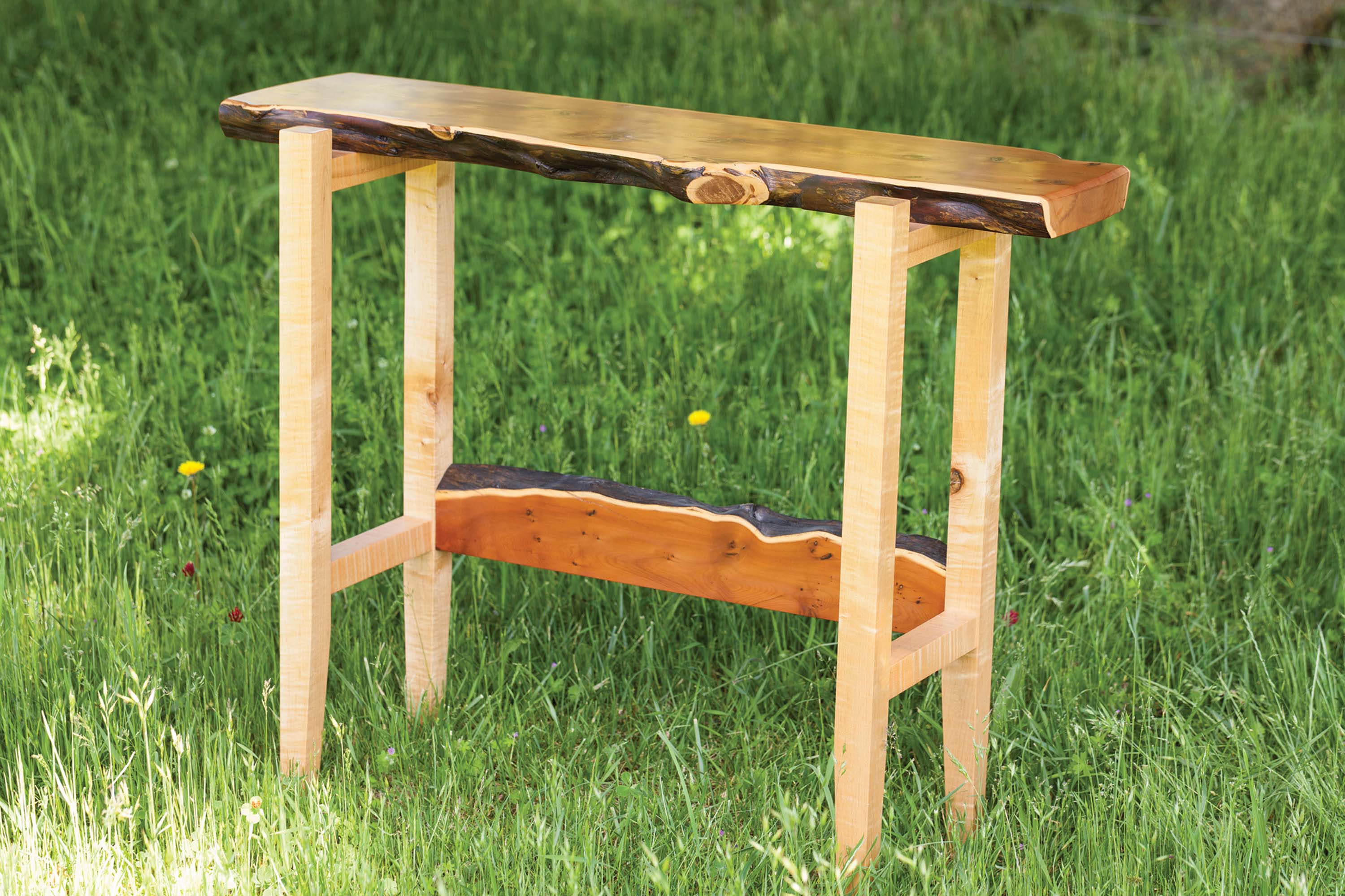
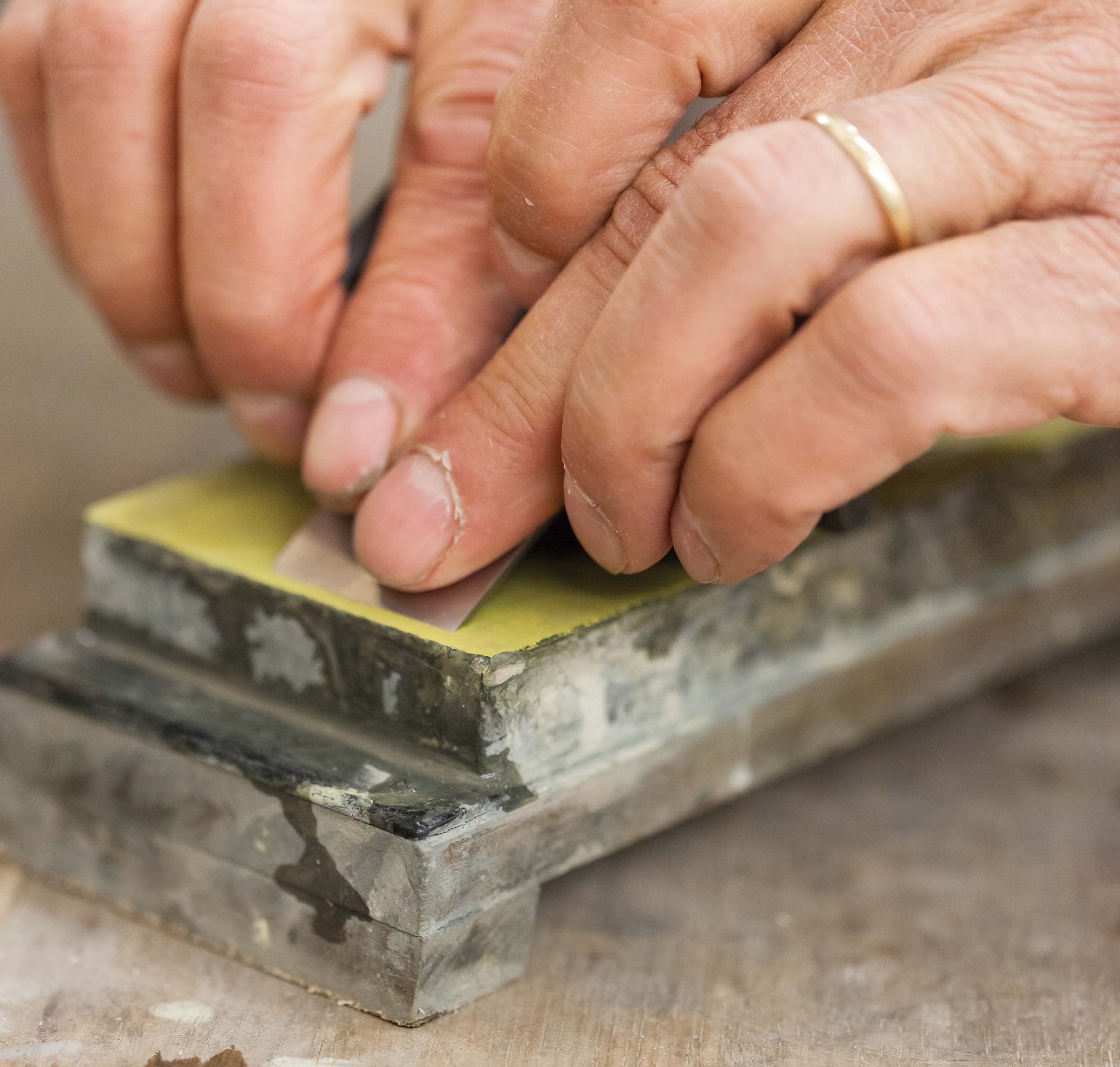
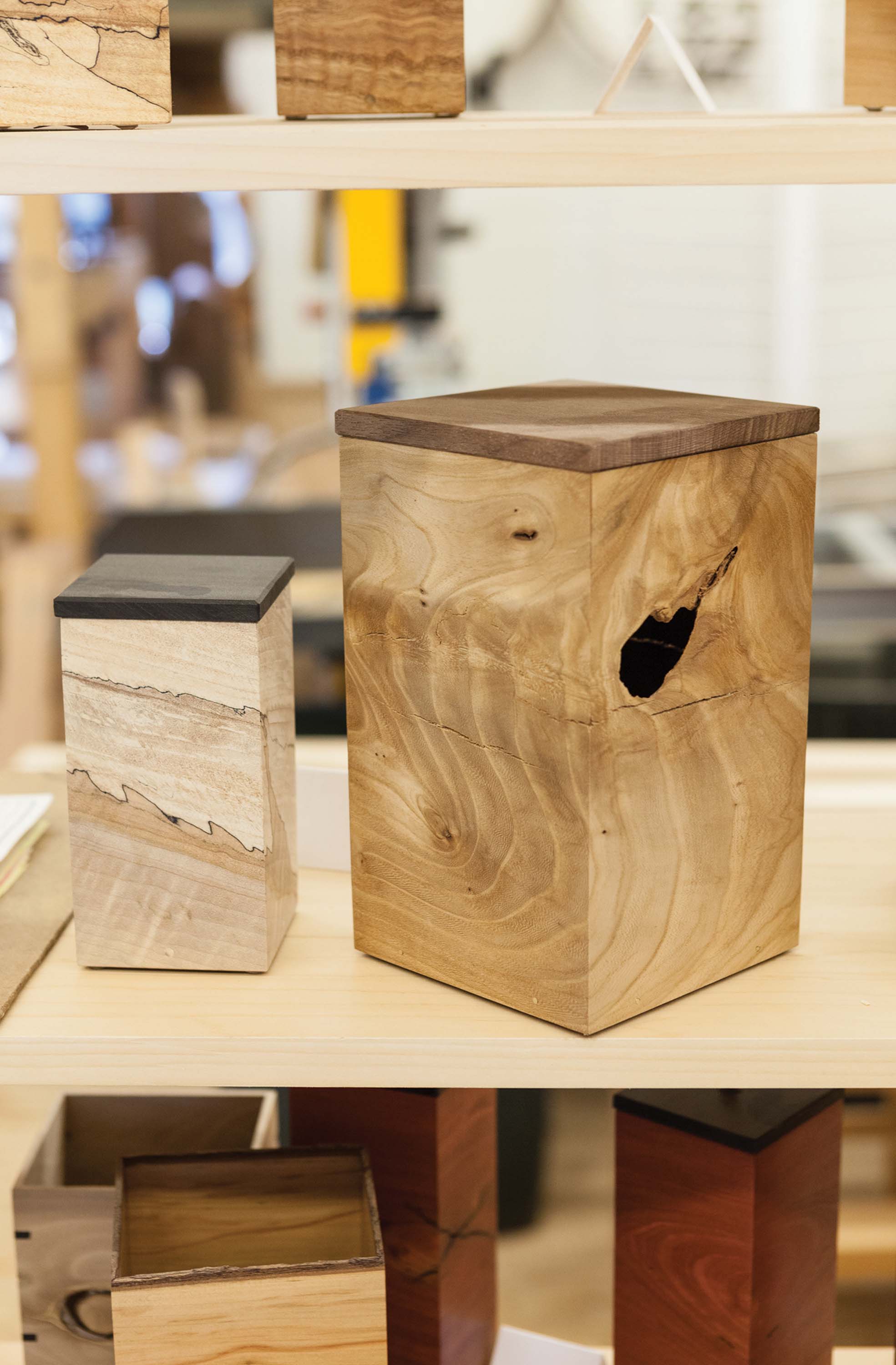

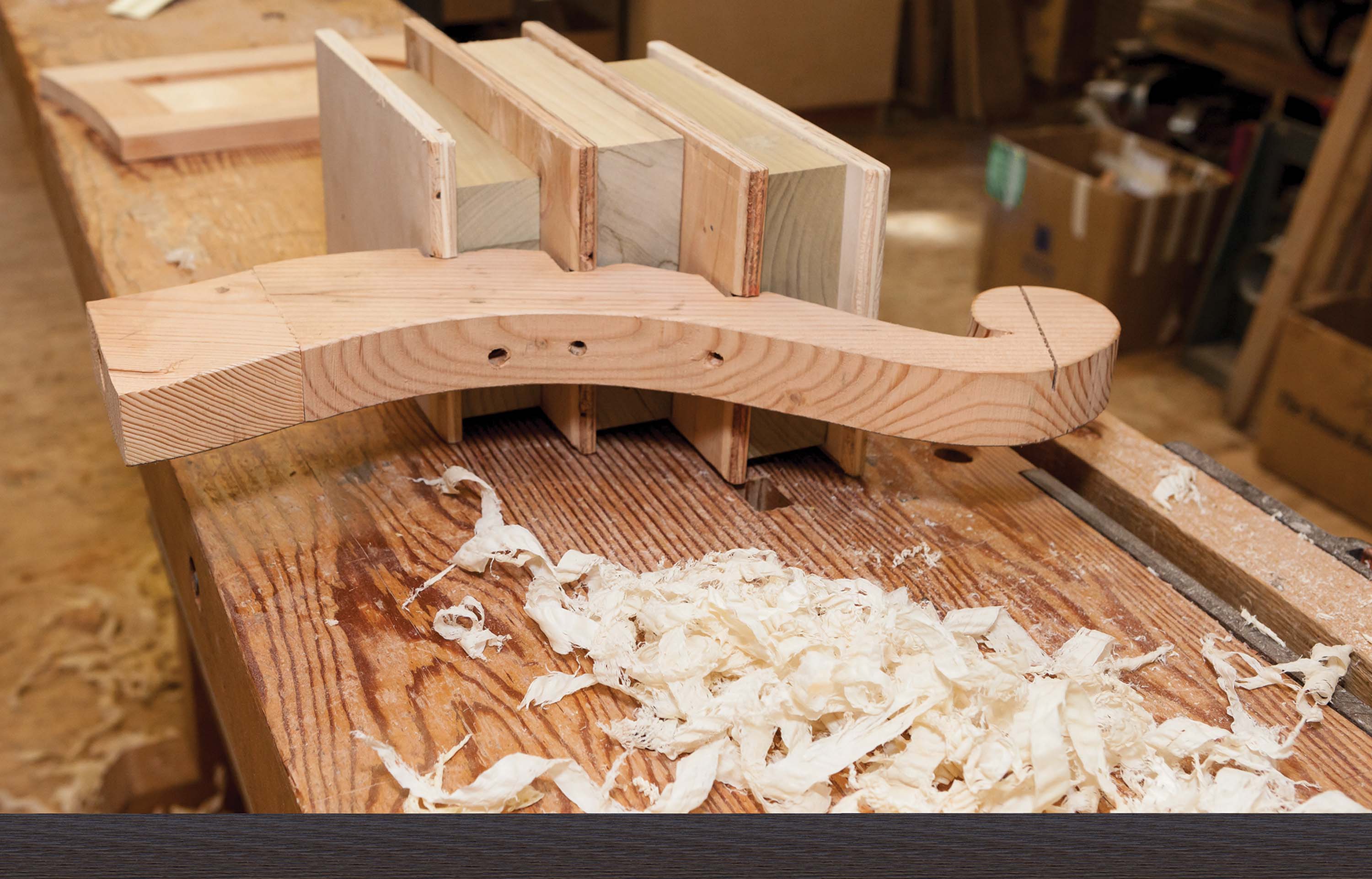
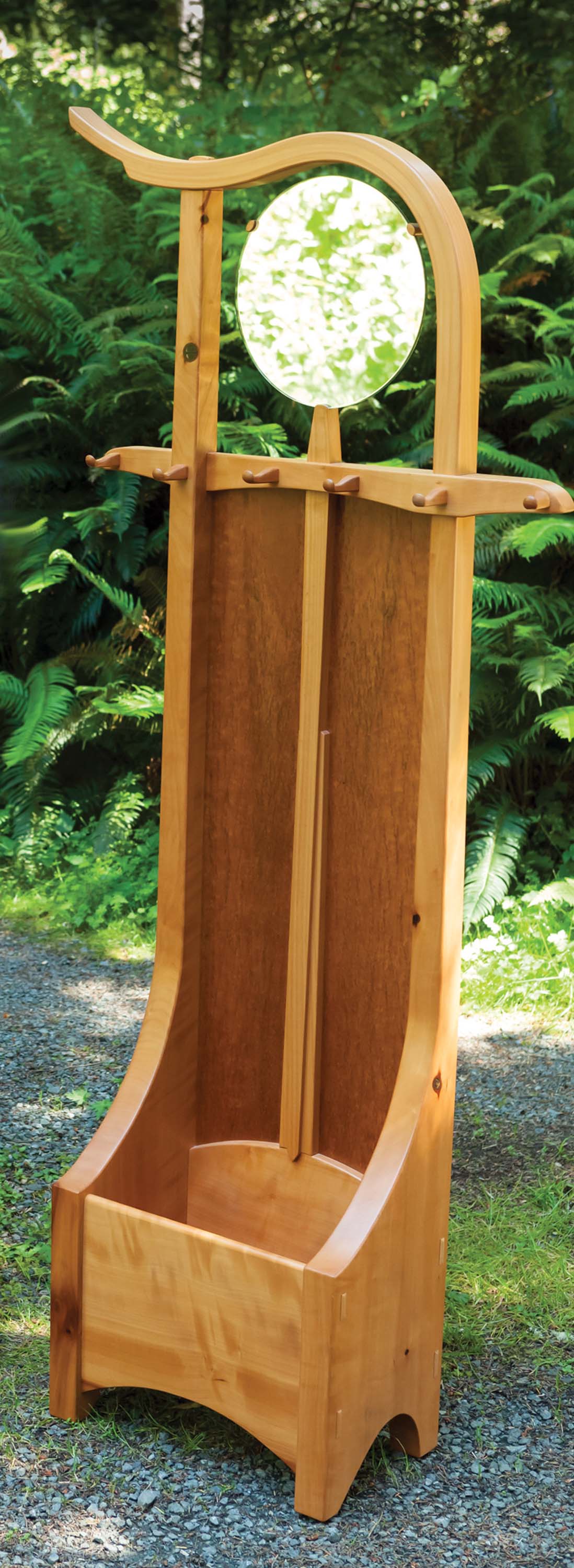
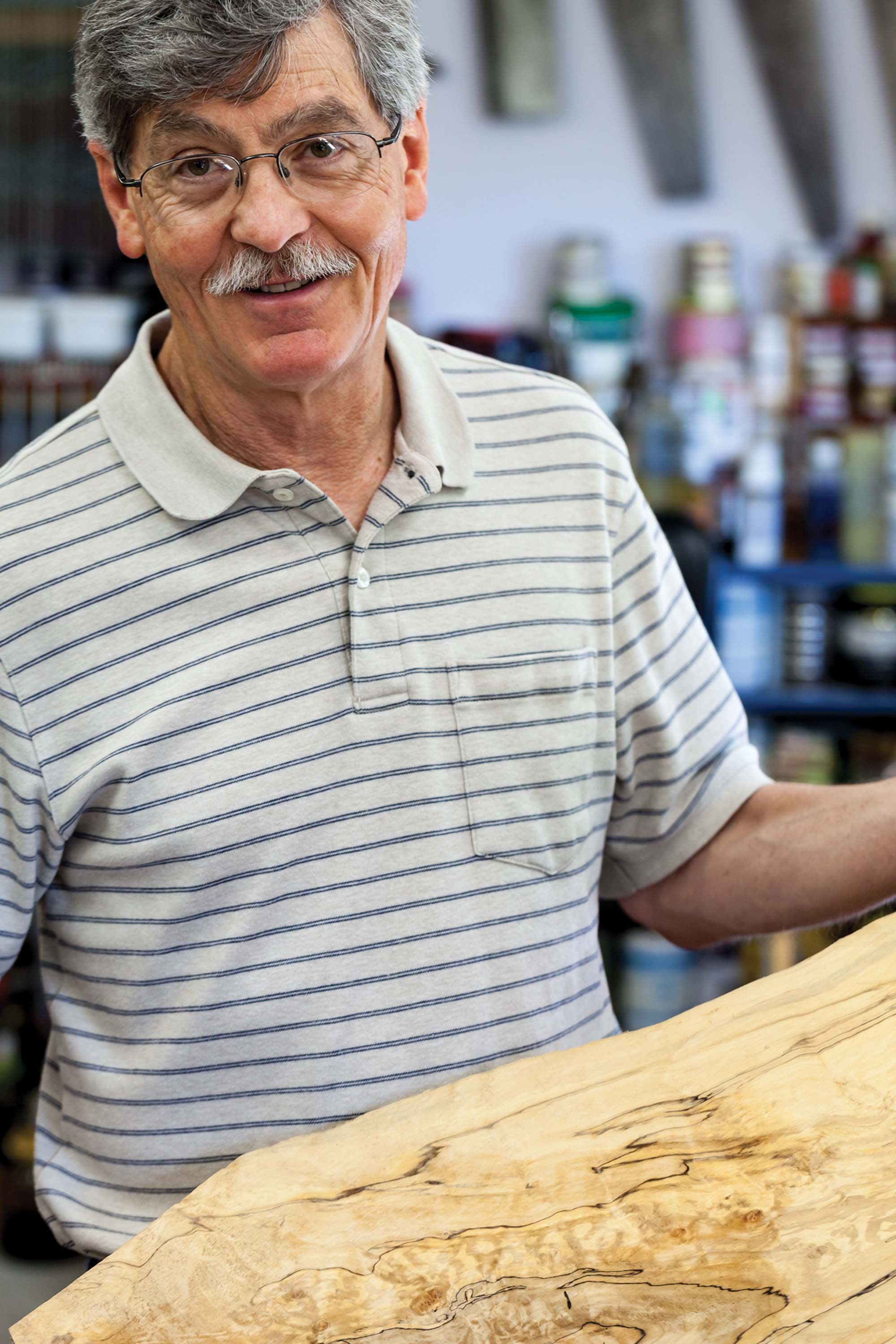
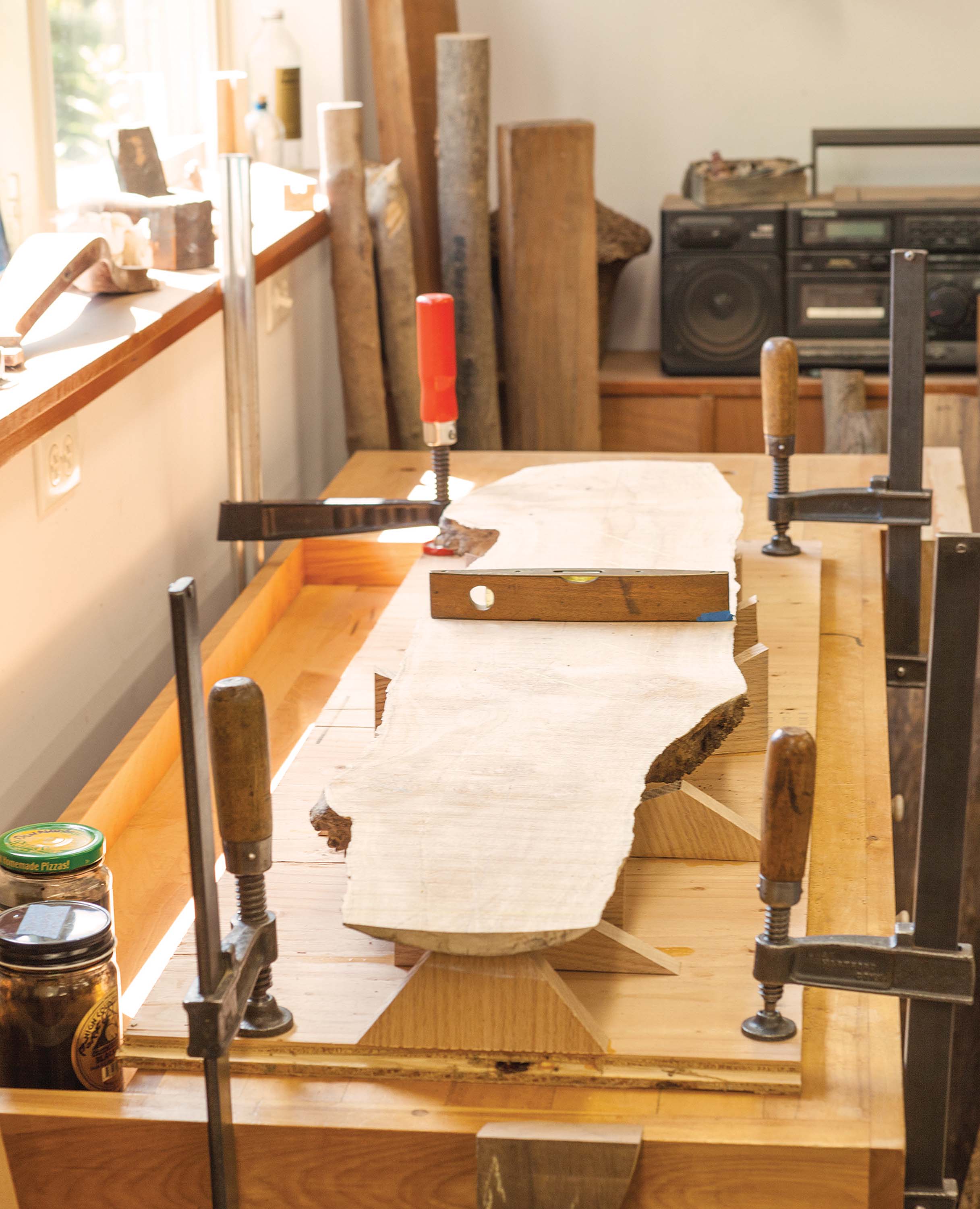
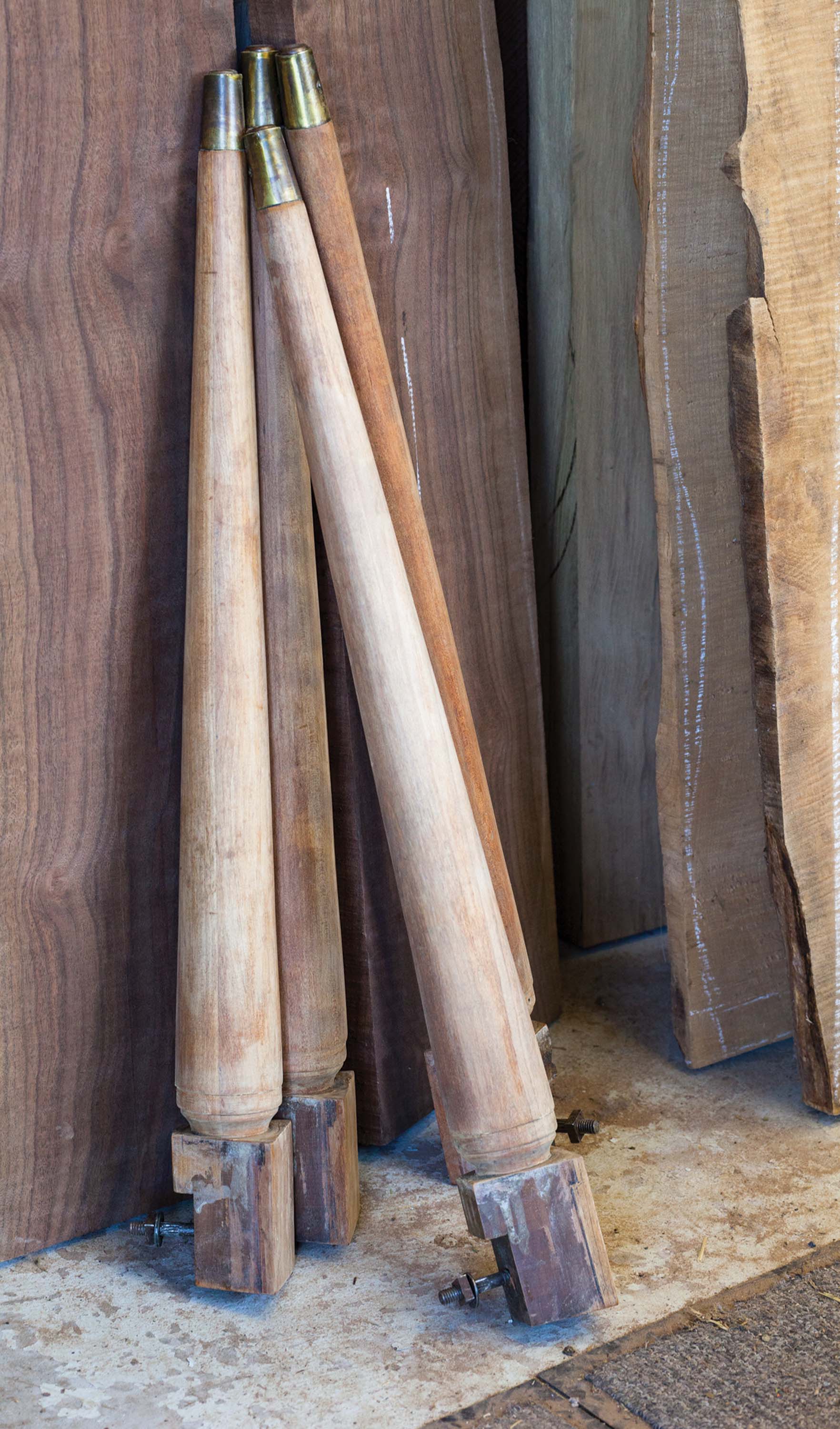
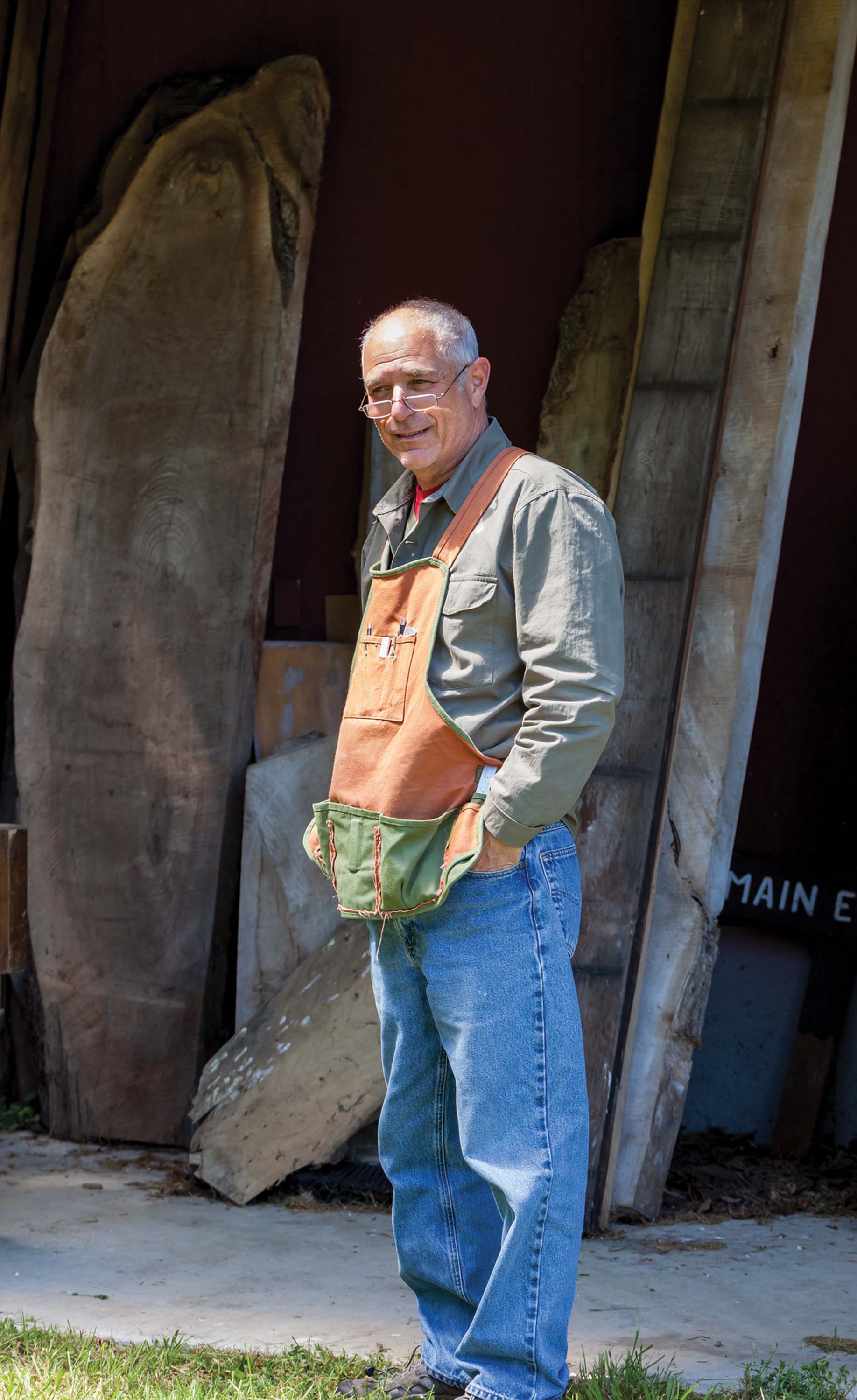
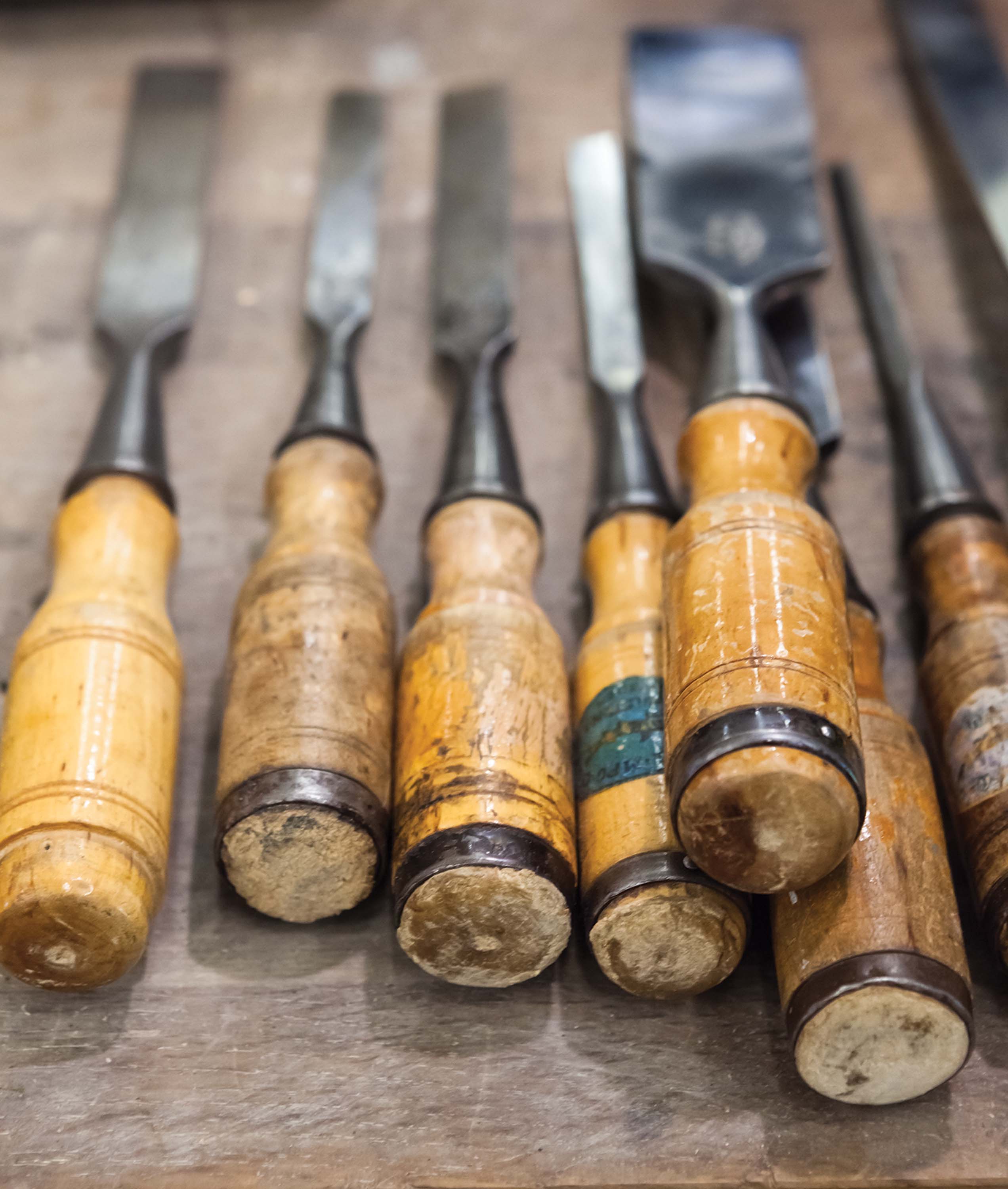
No Comments